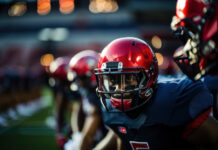Drawing sketches or other types of hand-drawn art with pens opens the door to many artistic possibilities. The substance used to display art is often a major factor that affects the quality of the final product. Here are techniques and tips for selecting and using pens for drawing on paper.
What Is the Proper Pen?
One question beginning artists should ask themselves is: what type of pen is most appropriate for any given art project? There are many types of pens to choose from, as most are designed more for handwriting than drawing. Usually, cheap pens available at discount stores are not the best choices for meaningful art.
In learning which pens for drawing and sketching are most appropriate for your specific project, it’s essential to understand pen sizes and ink qualities.
Ultimately, it’s up to each individual artist to determine which art supplies work best for their needs. A combination of personal taste and understanding of how pens work can enhance their art, leading to broader styles and techniques.
Determining Pen Size
Nibs, the tips of quills or fountain pens, come in various sizes such as superfine, fine, medium and brush. Faber-Castell Pitt Artist pens are used for fashion sketching and universally for all types of drawing.
Pen size is extremely important for drawing since it directly affects how images are perceived. Fine tip pens typically range in size from .05mm to .8mm. Fine tip nibs allow for greater precision in drawing lines. A pen size of .05mm is considered “extra fine.” These fine markers are useful for outlining existing drawings, such as those made from watercolor.
Ink Quality
A high-quality ink comes with the Sakura Pigma 30062 Micron Blister Card Ink Pen Set. Not only are these pens specifically designed for high-quality sketching, but they also have fade-resistant properties along with waterproof ink. This set of six pen sizes is a top choice for artists who care about a clean and precise appearance.
Ideally, the ink lasts several weeks, doesn’t smear and is free of toxic chemicals. Permanent and chemically stable ink are preferred by artists who understand the science of their craft.
The ink should also dry quickly so that the artist’s drawing hand doesn’t accidentally touch and smudge the ink. But even if this happens, it can teach the artist to be more aware of hand placement in future drawings.
Precision Drawings
Every line in a drawing conveys information to the viewer. Lines are capable of directing eyes to certain elements of a picture. It’s imperative for artists to pay close attention to lines and use them effectively for capturing attention. Sharp lines communicate impressive detail while shaky lines give away a lack of patience.
It’s important to remember when choosing a high-quality pen to use fine tips gently since they can split or break from excessive pressure. Another popular choice for sketching is the Staedtler Pigment Liner Bonus Sketch Set. This waterproof ink, which doesn’t bleed through typical drawing paper, allows for smooth drawing with ink that dries quickly. The pens are equipped with long metal barrel tips that help guide precision.
Prismacolor makes black markers of various sizes designed to help make crystal-clear outlines. This alcohol-based ink is acid-free, richly pigmented and resists fading, making it useful for enhanced sketches.
Holding a pen firmly and pulling it slowly is the key to drawing focused, straight lines. Holding it more lightly at the end gives the artist more variance for creating unpredictable lines. Starting with a pencil and then tracing over lines is a standard way for artists to save material and time since they can erase mistakes until they get the image right.
Considering Pen Longevity
Since art supplies cost money and high-quality pens can be expensive, artists should be aware of the lifespans of the specific pens they use. Some pens must be stored horizontally to preserve the ink, as storing certain pens upside down dry them out faster.
Pen and ink longevity are factors that fall under the category of sustainability, in which eco-friendly and cost-efficient solutions directly affect creators. The more an artist can reduce trips to the art store, the more he or she can concentrate on making art without running up expenses. Keep in mind certain pens can leak and waste ink.
Turnkey Pen Sets
Buying one pen at a time is not the most efficient way to invest in art supplies. There are various pen sets to consider at art stores. Pandafly makes a set of 13 black micro-pens that are used by beginners and high-end artists.
Your ideal pen set should include a wide range of sizes from .15mm to a brush. The ink should be free of both acid and smudging. Another consideration is whether or not the ink will blend well with other pens or material sources. It’s also important that the ink dries quickly and doesn’t bleed onto other pages.
Caps to pens should be color-coded to make pen selection easy. Part of the decision as to what types of pens to use depends on the type of paper or other mediums that the art will be drawn upon. Artists can gain deeper knowledge on art supplies by visiting https://getlifeyoudesire.com/.
White Gel Pens
One of the secrets to enhancing drawing with lines is to use thicker lines for objects that appear in shadows and thinner lines for objects exposed to light.
Learning how to use white gel pens can add brilliant effects to drawings, such as adding lighting to dark imagery. Pandafly makes white gel pens with fine tips that add subtle details to colors. This pen, which is held vertically and firmly, is favored by artists of all levels for making customized art projects.
Conclusion
Deciding on pens and other supplies for drawing art should be based on the quality the artist aims to convey. Purchasing pen sets from art stores is usually the most economical way to invest in quality pens that help deliver precision art.
Find a Home-Based Business to Start-Up >>> Hundreds of Business Listings.

















































